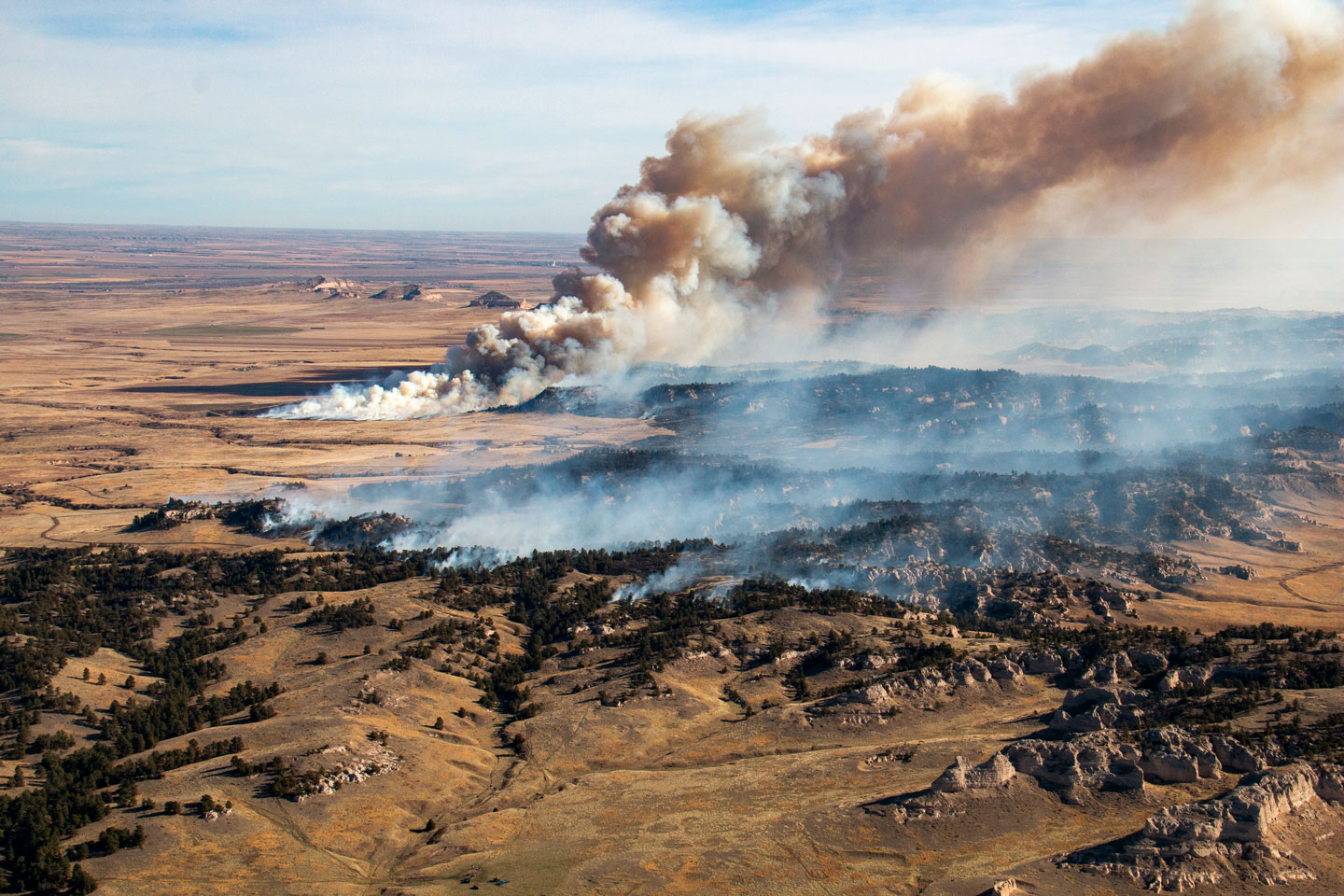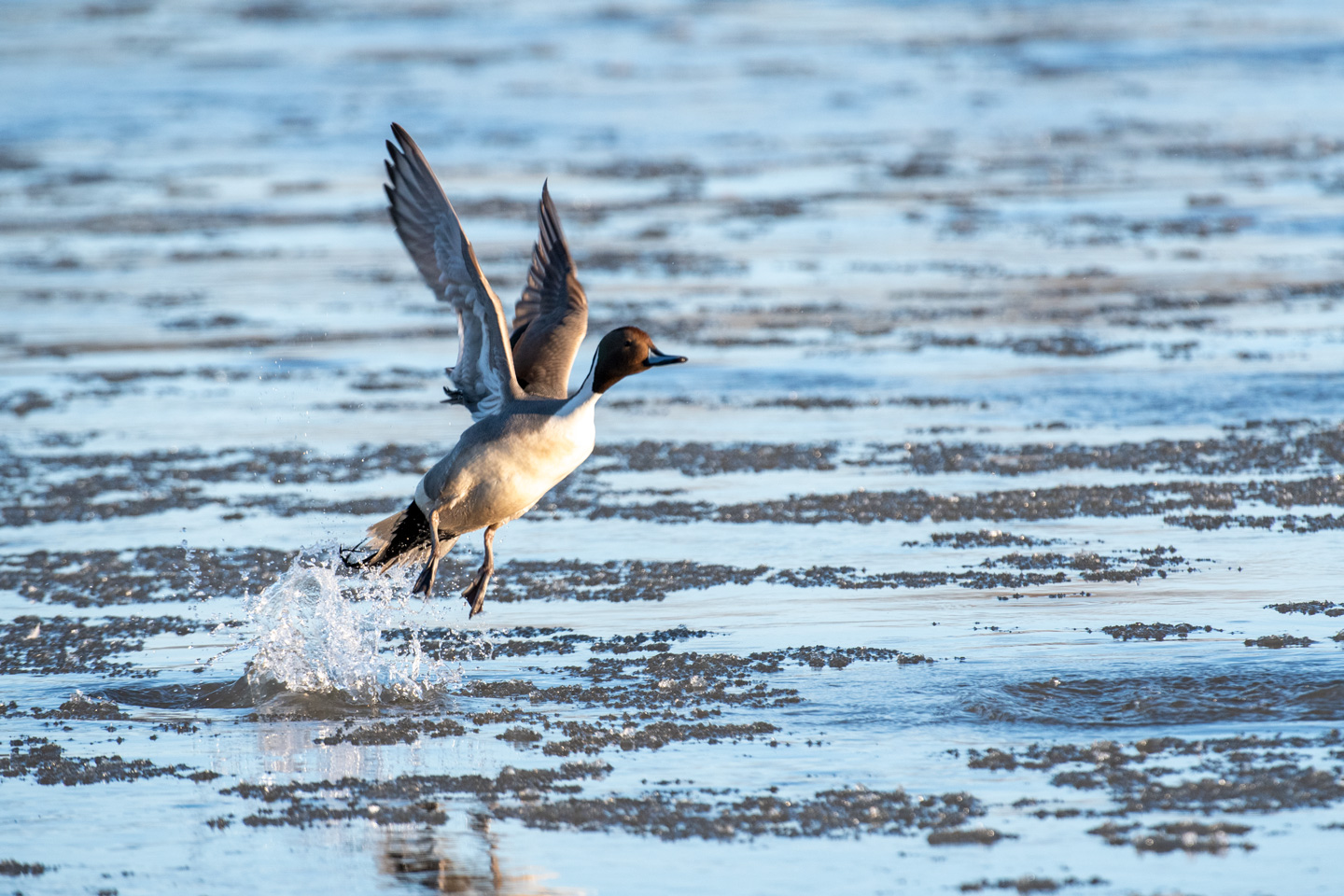Wildlife diseases
Like most living things, wildlife are susceptible to illness and disease. Wildlife that are sick or diseased may appear docile or exhibit unusual behavior. Outdoor enthusiasts should be alert to conditions and report any sick or dead animals to the Game and Parks Commission to ensure that proper procedures and testing will take place.
As is so often the case, management of any species is greatly dependent upon the assistance and cooperation of our public and those efforts are greatly appreciated. Report sick or potentially sick animals to the Game and Parks office nearest you.
The following are diseases affecting that have been documented in Nebraska and are of concern to wildlife biologists:
Chronic Wasting Disease (CWD) was first discovered in Colorado in 1967 and in Nebraska in 2000 in Kimball County. Since 1997, Game and Parks staff have tested nearly 53,000 deer and found 630 that tested positive. CWD has now been found in 42 Nebraska counties, some as far east as Grand Island, as well as in 21 states and two Canadian provinces. While questions remain, most hunters have adjusted to CWD on the landscape.
Hemorrhagic disease (HD) is a generalized term for two related viruses in the genus orbivirus: epizootic hemorrhagic disease virus and bluetongue virus. HD is transmitted to deer by biting midges of the genus Culicoides. Pronghorn, white-tailed deer and mule deer are all susceptible to HD, but white-tailed deer seem to be more vulnerable. Signs of HD include
Epizootic hemorrhagic disease (EHD)
Epizootic hemorrhagic disease (EHD) is a disease caused by viruses in the genus orbivirus. It is transmitted to deer by biting midges of the genus culicoides. Both white-tailed deer and mule deer are susceptible to EHD, but white-tailed deer seem to be more vulnerable. Cattle can be infected by the virus but rarely die from it. EHD is not known to infect humans.
This disease most commonly occurs in the late summer and early fall. The timing of this disease is most likely related to the abundance of the midge vectors, with the disease usually ending after the first frost. EHD can be acute, leading to death quickly with deer in good body condition and coat. It may also be chronic, with the deer becoming emaciated and lame. Clinical signs are therefore widely varied. They may include fever, hemorrhaging around the orifices and lack of fear of humans. Generally, high fevers lead deer to water before they die. However, this may not always be the case where die-offs occur over a large geographic region. A confirmed diagnosis requires fresh lymph nodes or blood from sick or freshly killed deer exhibiting clinical sings. For more information, visit the EHD page.
Bovine tuberculosis (TB) is a progressive, chronic bacterial disease caused when bacteria attack the respiratory system of primarily cattle, though deer may also become infected. The disease compromises the immune system and can lead to death from related causes. If left unchecked, the disease would likely spread and become established within the deer population. As a result of this, there would be permanent risk of continuous deer-to-deer or deer-to-livestock transmission of the disease. Bovine TB in animals typically presents in the lungs but may also occur in the intestines and other parts of the body. For more information, visit the bovine TB page.
Meningeal worm or brainworm (parelaphostrongylus tenuis) is a nematode parasite common to deer species that causes damage to the central nervous system. Whitetail deer are common carriers of this parasite. Mule deer, elk and moose are also susceptible to the parasite but are aberrant hosts and are infected in neurological instead of meningeal tissue. The frequency of infection in these species increases dramatically when their ranges overlap high densities of white-tailed deer.[4]
The lifecycle begins in infected meningeal tissues in the central nervous system where adult worms lay eggs. The eggs are dislodged from the central nervous system and pass into the lungs where they hatch. The larvae are then coughed up, swallowed, and proceed through the gastrointestinal tract. Snails and slugs then serve as intermediate hosts which are later eaten by ungulates allowing the process to continue. Changes in climate and habitat beginning in the early 1900s have expanded range overlap between white-tailed deer and moose, increasing the frequency of infection. This increase in infection is a concern for wildlife managers.
Avian influenza (AI) is primarily disease of poultry, waterfowl and migratory birds caused by Type A influenza viruses. This virus can infect several species of domestic poultry, including chickens, turkeys, quail, guinea fowl and ducks, as well as caged and wild birds. AI viruses have also been isolated, although less frequently, from mammalian species, including rats, mice, weasels, ferrets, pigs, cats, tigers, dogs and horses, as well as from humans.
There are many AI virus strains, which are usually classified into two categories according to the severity of the disease in poultry: low pathogenic (LPAI) strains, which typically cause few or no clinical signs in poultry, and highly pathogenic (HPAI) strains, which can cause severe clinical signs and potentially high mortality rates among poultry. In 2015, AI was confirmed in Nebraska. More information is available on the AI page.
White-nose syndrome (WNS) is an emergent disease of hibernating bats that has spread from the northeastern to the central United States at an alarming rate. Since the winter of 2007-2008, millions of insect-eating bats in 25 states and five Canadian provinces have died from this devastating disease.The disease is named for the white fungus, Pseudogymnoascus destructans, which infects skin of the muzzle, ears and wings of hibernating bats.
Current estimates of bat population declines in the northeastern United States since the emergence of WNS are approximately 80 percent. This sudden and widespread mortality associated with WNS is unprecedented in hibernating bats, among which disease outbreaks have not been previously documented. It is unlikely that species of bats affected by WNS will recover quickly because most are long-lived and have only a single pup per year. Consequently, even in the absence of disease, bat populations do not fluctuate widely in numbers over time.
Learn more via the White Nose Syndrome website
Learn even more via the National Wildlife Health Center website
Additional diseases
Following are links to information on other diseases documented in Nebraska:
Tularemia
Centers for Disease Control
Iowa State University
West Nile Virus
Centers for Disease Control
United States Geological Survey National Wildlife Health Center
Lyme Disease
Centers for Disease Control
Web MD
Nebraska Medical Center






